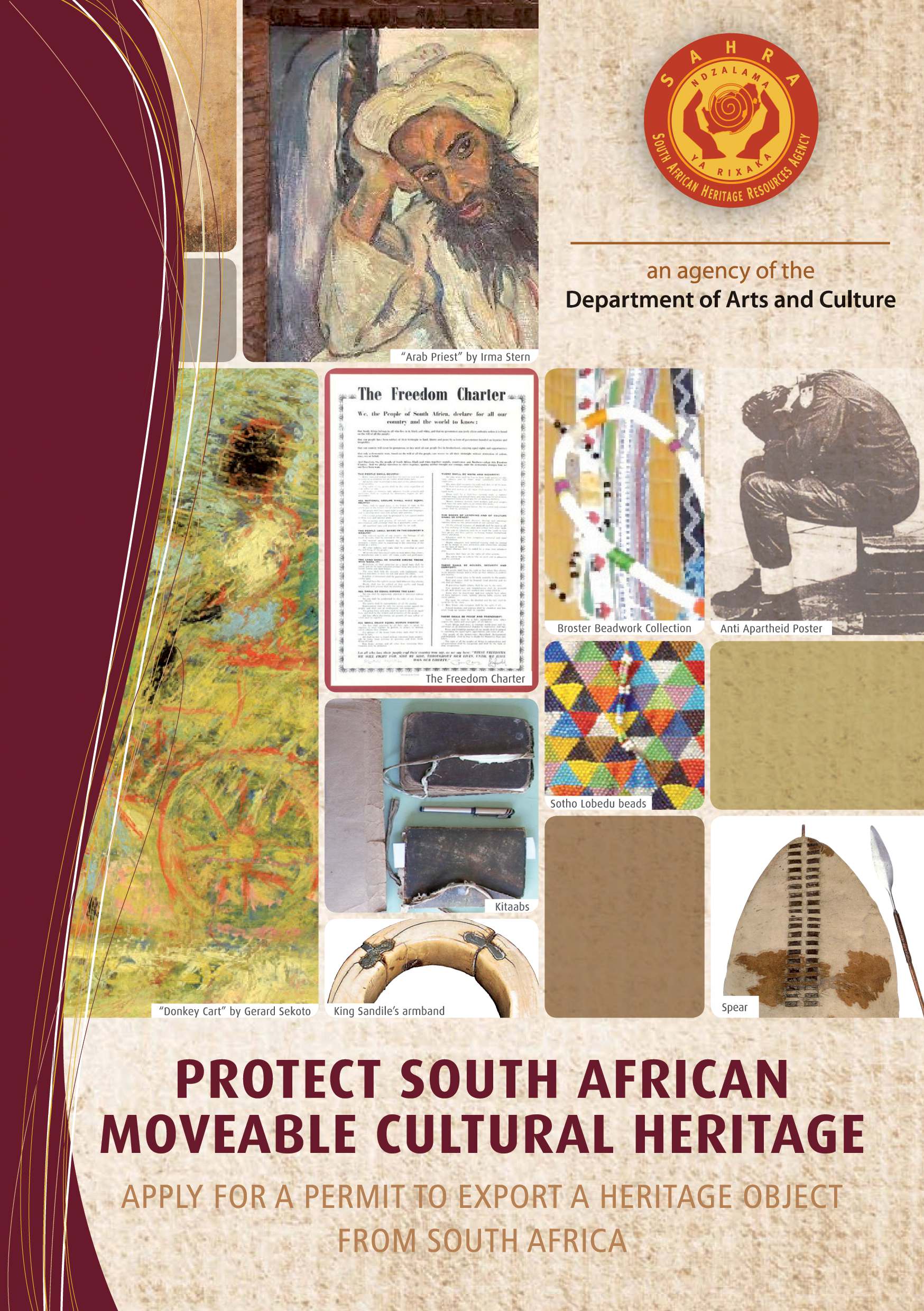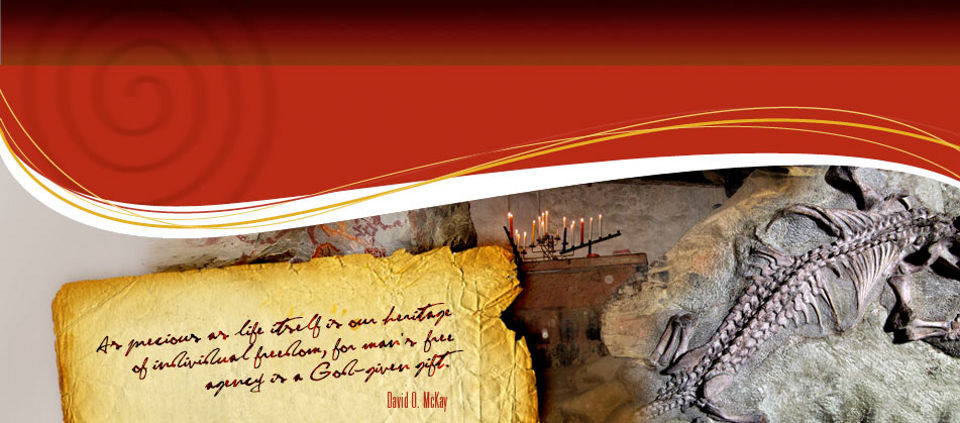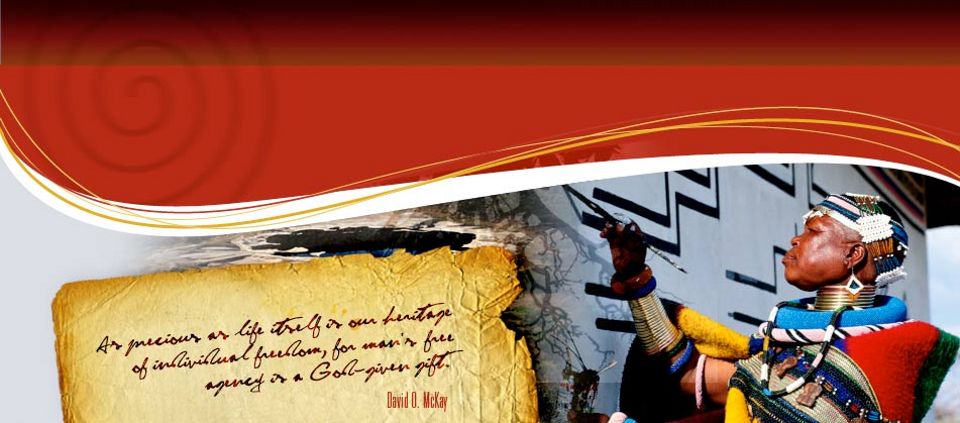THIS IS THE ARCHIVE FOR SAHRIS 1.0
THIS SITE IS NOW AN ARCHIVE AND IS NOT SUITABLE FOR MAKING APPLICATIONS
Please be aware that no content and application creation or changes to information on this version of SAHRIS will be retained.
To make applications or utilise SAHRIS for the creation of information, please use the new site:
https://sahris.org.za
Changes to SAHRIS!
The South African Heritage Resources Information System (SAHRIS) has undergone a generational upgrade and restructure. These changes to the site include, but are not limited to:
- A new & modernised look and layout
- Improved site usage flows with respect to applications and content creation
- Improved site performance and stability
Launch for the new version of SAHRIS occurred on Monday the 30th of October 2023.
The new site can be found here:
SAHRIS | SAHRIS
Protect South African Moveable Cultural Heritage

What is a Heritage Object?
Heritage Objects are objects that people have used in their daily lives throughout the ages, and provide insight into both the people who made them, and were influenced by them, as well as how their use developed over time. Heritage Objects become meaningful when we know who used them, be it for daily use, or as a way for people to express themselves. Objects used or admired in homes, schools, churches, work places, government institutions and museums, may form part of South Africa's National Estate. Heritage Objects range from artworks to beadwork, vehicles to firearms, furniture to trains, aircraft to coins, and textiles to medals.
They include objects of ritual and symbolic significance, objects of adornment, technological and scientific objects, and memorabilia associated with leaders and/or events in the history of South Africa . They may be held in public museums, or other heritage institutions, or belong to private individuals. There are specific criteria governing what constitutes a Heritage Object. Government Gazette No. 24116 of 6 December 2002 lists eleven categories of objects that are protected and may not be exported without a permit from SAHRA.
Heritage Objects are protected and may include:
1. Antiquities, e.g.coins, utensils, ceramics, jewellery, seals, weapons, tools and inscriptions, that have been here for more than 100 years;
2. Original fabric, removed from historical buildings;
3. Indigenous art and objects;
4. Objects relating to our history, including the history of science and technology, military and social history, as well as the lives of national leaders, thinkers, scientists and artists, and to events of national importance;
5. South African objects of artistic interest that have been here for 50 years or more, including paintings and drawings produced by hand, 2 original prints, posters and photographs, original artistic assemblages and montages; works of statuary art and sculpture in general; applied art, using materials such as glass, ceramics, metal and wood; and objects of ritual and symbolic significance, as well as personal adornment like beadwork, leather- or metal-work;
6. South African medals, coins, stamps, and cancellations that have been here for more than 100 years;
7. Manuscripts, books & documents, publications of special interest to our history and culture that have been here for 50 years or more; or that are otherwise deemed to be of special interest and importance to our heritage;
8. South African archives, including written records, maps and other cartographic materials, prints, photographs, cinematographic films, sound recordings and machine-readable records, that have been here for more than 50 years; or that are listed in the national registers of manuscripts, photographs, audio-visual material and oral sources;
9. South African furniture, tapestries, carpets, clothing and musical instruments older than 100 years; and
10. South African zoological, botanical, and geological specimens that have been here for more than 100 years;
11. The above exclude objects made by any living person.
The Criteria:
DECIDING WHETHER A MOVABLE HERITAGE RESOURCE FORMS PART OF THE NATIONAL ESTATE WILL BE DETERMINED BY:
a. its importance in the community, or pattern of South Africa's history;
b. whether it possesses uncommon, rare or endangered aspects of our natural or cultural heritage;
c. its potential to further our understanding of our natural or cultural heritage;
d. whether it demonstrates the principal characteristics of a particular class of our natural or cultural places, or objects;
e. whether it exhibits particular aesthetic characteristics valued by a community or cultural group;
f. whether it shows a high degree of creative or technical skill at a particular period;
g. its strong, or special association with a particular community or cultural group for social, cultural or spiritual reasons;
h. its strong or special association with the life or work of a person, group or organisation of importance in our history; and
i. whether it is a site of significance relating to the history of slavery.
How to apply for a permit
• Both the public sector (museums, universities, archives, libraries, government departments (e.g SAPS, SANDF, DPW) and Parliament as well as the private sector (private owners, auction houses, dealers) must apply to SAHRA for a permit before exporting objects that have heritage value.
• Applicants are urged to apply for permits online. To do so, go to www.sahra.org.za. and register an account on South African Heritage Resources Information System (SAHRIS).
• The application must be accompanied by a good quality photograph and description of the object, its provenance, measurements, and proof that the permit fees have been paid.
• Processing a permit application could take from two weeks to several months, depending on the complexities of each case.
• When SAHRA receives a permit application, the description of the object is circulated to an expert panel which assesses its significance. If the application is approved, a permit is issued. If not, the applicant is informed of the reasons, and they have a right to appeal against SAHRA's decision within a specific time frame.
International loans of Heritage Objects
A museum, private entity, or individual must apply for a permit from SAHRA if a heritage object is to be loaned overseas for reasons of study or exhibition. This ensures that proper loan agreements and conditions are put in place and that a central record is kept of heritage objects that have been permitted to leave South Africa temporarily for research or exhibition purposes. If these conditions are not met, South Africa stands to lose heritage objects that form part of the National Estate which should be preserved for future generations of South Africans.
Loan Agreement
SAHRA has drafted a generic loan agreement to guide museums on the kinds of issues that may be encountered and the conditions under which a loan should be entered into.
Foreign Exchange
All foreign exchange transactions in South Africa are subject to exchange control regulations, which are governed by the South African Reserve Bank. Where the insurance value of your personal belongings, not for sale, exceeds R50 000 you must obtain a No Exchange Provided Form (NEP form) attested by a bank or by Customs and Excise. (This means that goods are being exported outside of SA that are not intended for sale. Therefore no proceeds shall accrue to South Africa). Please enquire at your nearest Foreign Exchange outlet should you need this form.
Packing & Transporting Heritage Objects
Heritage objects must be carefully assessed before being packed & transported off-site, so as to ensure their long-term preservation.
PACKING - be aware of the types of material to be packed, and their susceptibility to damage.
Methods of packing should minimise risk of damage by ensuring:
• full support for objects;
• protection from vibration, shock & adverse environmental conditions;
• appropriate packing & crating methods;
• neutral packing materials.
Packing documentation should include: a contents list, with photographs; 4 sets of unpacking & re-packing instructions.
The crate:
• must provide heritage objects with adequate protection against climatic changes & fluctuations;
• should allow objects to adjust gradually to the new environment, allowing more than 24 hours for acclimatisation to a new and different one;
• consider the final weight of crate, & loading capacity of lender & borrower's buildings;
• check size limitations of crates to be air-freighted.
Specifications of a suitable crate:
• an outside shell of timber; a waterproof lining;
• well-sealed lids with foam, or rubber gaskets;
• smaller crates opening at the top, large crates opening at one side;
• fix lids with screws, or threaded bolts, for ease of opening & closing several times;
• do not use nails that cause vibration from the hammering when the lid is fitted;
• use different densities of polyethylene foam padding to absorb shock & vibration;
• label crate clearly on 2 sides, and top of crate;
• attach stickers with standard international symbols, 'rain', 'sun' & 'fragile';
• attach originating & destination addresses.
TRANSPORTATION - it is important to consider the vulnerability of objects, and the risks to them when they are transported.
There is a need:
• for good, secure support in transit;
• to protect objects from an adverse environment, i.e. moving from one climatic zone to another;
• to consider carefully the advantages & disadvantages of different forms of travel.
A few local transport companies specialise in packing and moving heritage collections nationally & internationally
Importing Heritage Objects
It is illegal to import a heritage object without a permit and anyone found guilty of doing so is liable to be fined or imprisoned, or both. Heritage objects that arrive in South Africa from a foreign country without a permit may be confiscated by Customs and handed over to SAHRA for safekeeping until the matter is resolved. Customs applies commercial rules to objects that are entering South Africa for educational or cultural heritage purposes. All goods arriving here are subject to custom duties and VAT. As the loaned heritage object is a temporary import, it is subject to a provisional payment, which would have to be lodged with Customs. [Alternatively, a special bond with Customs can be applied for well in advance of the object's arrival].
Exemption from customs and other duties
You may apply for a rebate permit from the International Trade Administration Commission (ITAC) to be able to import donated goods under rebate of duty.
THE CONTACT DETAILS FOR THE ITAC ARE AS FOLLOWS:
The Director: Import and Export Control
Private Bag X753, PRETORIA, 0001
Website: www.itac.org.za
VAT is payable on imported goods but a VAT exemption may be applied for from the South African Revenue Service (SARS) Head Office at the following address:
The Commissioner for the South African Revenue Service
Operations Support, OPS Legal Support
Private Bag X923, Pretoria, 0001
Contact SAHRA on either info@sahra.org.za or, 021 4624502, if you require further information.
www.sahra.org.za
AttachedDocs:
Post date:
- 3935 reads






